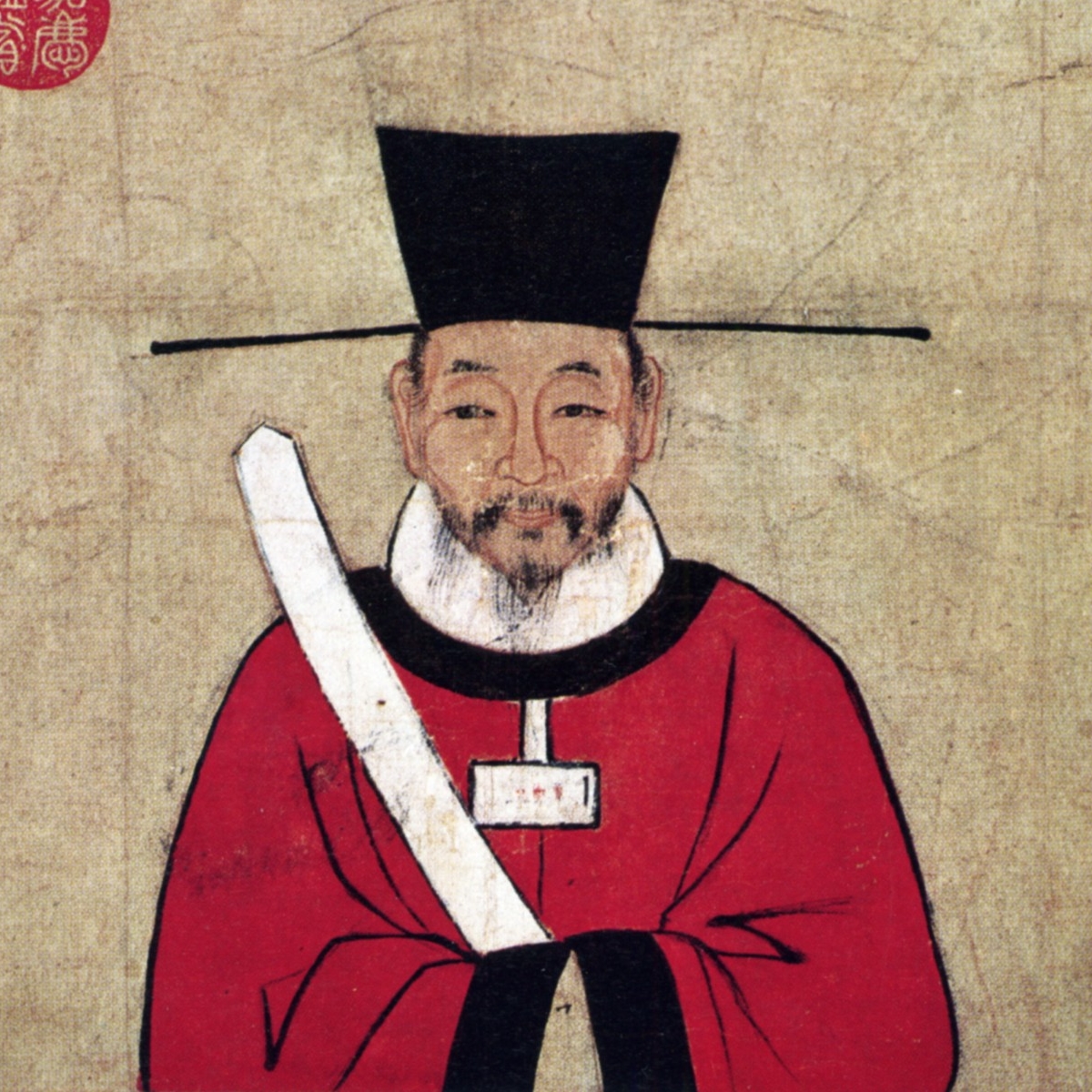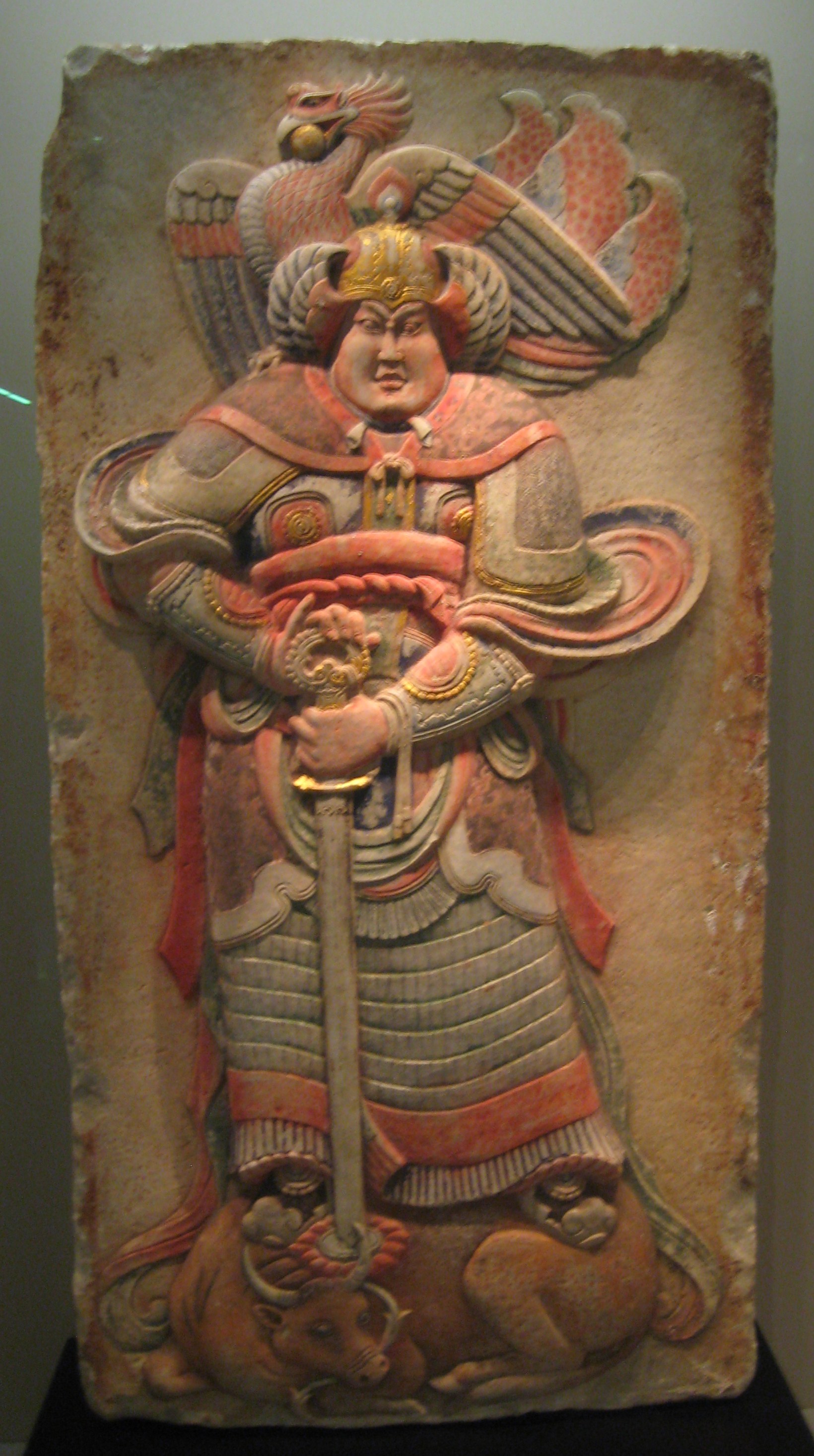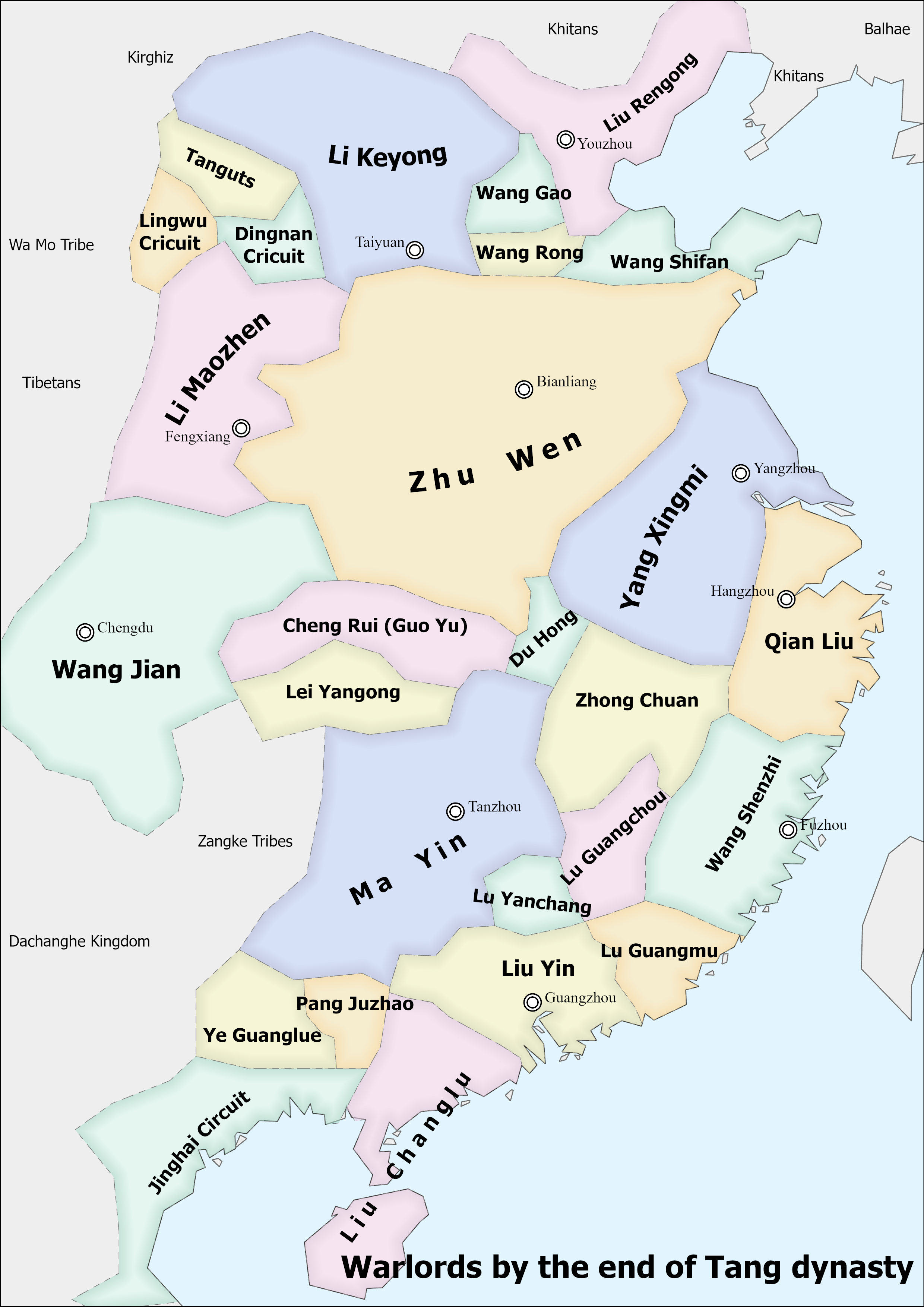|
Li Renfu
Li Renfu (李仁福) (died March 10, 933''Zizhi Tongjian'', vol. 278.Academia Sinicabr>Chinese-Western Calendar Converter), possibly né Tuoba Renfu (拓拔仁福), formally the Prince of Guo (虢王), was an ethnic Dangxiang (Tangut) warlord during the Five Dynasties and Ten Kingdoms period, ruling Dingnan Circuit (定難, headquartered in modern Yulin, Shaanxi) from 909 or 910 to his death in 933, as its military governor (''jiedushi'') in ''de facto'' independence. Background Li Renfu was said to be from the same Tuoba clan as the late-Tang dynasty warlord Li Sigong (né Tuoba Sigong), the first Dangxiang military governor of Dingnan,''Old History of the Five Dynasties'', vol. 132. and therefore was ethnically Dangxiang.See '' New Book of Tang'', vol. 221, part 1. His relationship to Li Sigong was not clear from the traditional Chinese sources—the ''Old History of the Five Dynasties'' indicated that he also took the Tang dynasty imperial clan surname of Li when Li Sigo ... [...More Info...] [...Related Items...] OR: [Wikipedia] [Google] [Baidu] |
Zizhi Tongjian
The ''Zizhi Tongjian'' (1084) is a chronicle published during the Northern Song dynasty (960–1127) that provides a record of Chinese history from 403 BC to 959 AD, covering 16 dynasties and spanning almost 1400 years. The main text is arranged into 294 scrolls (), each equivalent to a chapter—totaling around 3 million Chinese characters. In 1065, Emperor Yingzong of Song commissioned his official, Sima Guang (1019–1086), to lead a project to compile a Universal history (genre), universal history of China, and granted him funding and the authority to appoint his own staff. His team took 19 years to complete the work and in 1084 it was presented to Emperor Yingzong's successor Emperor Shenzong of Song. It was well-received and has proved to be immensely influential among both scholars and the general public. Endymion Wilkinson regards it as reference quality: "It had an enormous influence on later Chinese historical writing, either directly or through its many a ... [...More Info...] [...Related Items...] OR: [Wikipedia] [Google] [Baidu] |
Shaanxi
Shaanxi is a Provinces of China, province in north Northwestern China. It borders the province-level divisions of Inner Mongolia to the north; Shanxi and Henan to the east; Hubei, Chongqing, and Sichuan to the south; and Gansu and Ningxia to the west. Shaanxi covers an area of over with about 37 million people, the 16th-largest in China. Xi'anwhich includes the sites of the former capitals Fenghao and Chang'anis the provincial capital and largest city in Northwest China and also one of the oldest cities in China and the oldest of the Historical capitals of China, Four Ancient Capitals, being the capital for the Western Zhou, Western Han, Sima Jin, Jin, Sui dynasty, Sui and Tang dynasty, Tang List of Chinese dynasties, dynasties. Xianyang, which served as the capital of the Qin dynasty (221–206 BC), is just north across the Wei River. The other Prefectures of China, prefecture-level prefecture-level city, cities into which the province is divided are Ankang, Baoji, Hanzho ... [...More Info...] [...Related Items...] OR: [Wikipedia] [Google] [Baidu] |
Xianyang
Xianyang ( zh, s=咸阳 , p=Xiányáng) is a prefecture-level city in central Shaanxi province, situated on the Wei River a few kilometers upstream (west) from the provincial capital of Xi'an. Once the capital of the Qin dynasty, it is now integrated into the Xi'an metropolitan area, one of the main urban agglomerations in northwestern China, with more than 7.17 million inhabitants. Its built-up area, consisting of 2 urban districts (Qindu and Weicheng), had 945,420 inhabitants at the 2010 census. It has a total area of . Xianyang is the seat of the Xi'an Xianyang International Airport, the main airport serving Xi'an and the largest airport in Northwest China, and one of the 40 busiest airports in the world. Xianyang is one of the top 500 cities in the world by scientific research outputs, as tracked by the Nature Index. It is home to the main campus of Northwest A&F University (NWAFU), one of the world's top universities in agriculture science related fields, and a m ... [...More Info...] [...Related Items...] OR: [Wikipedia] [Google] [Baidu] |
Li Jihui
Li Jihui () (died 914), né Yang Chongben () (and usually referred to by that name in historical sources), was a Chinese politician and warlord in the late Chinese Tang dynasty and early Five Dynasties and Ten Kingdoms period state Qi, who ruled Jingnan Circuit (靜難, headquartered in modern Xianyang, Shaanxi) as its military governor (''Jiedushi''). Background It is not known when Yang Chongben was born, and the traditional historical sources were explicit in stating that the authors did not know his geographical origin.'' History of the Five Dynasties'', vol. 13.''New History of the Five Dynasties'', vol. 40. In his youth, he was adopted by the general Li Maozhen, and so changed his name to Li Jihui. The first historical record of a battle he was involved in was in 897. when he was one of the officers that Li Maozhen, then the military governor of Fengxiang Circuit (鳳翔, headquartered in modern Baoji, Shaanxi), sent to aid his ally Gu Yanhui the military governor of Don ... [...More Info...] [...Related Items...] OR: [Wikipedia] [Google] [Baidu] |
Qi (Five Dynasties)
Qi () was a kingdom during the Five Dynasties and Ten Kingdoms period in Chinese history. The kingdom, at its prime, covered parts of modern-day Gansu, Shaanxi, and Sichuan provinces, but eventually shrank to only the immediate area around its capital Fengxiang in Shaanxi. Its only ruler was Li Maozhen, who later submitted to Later Tang. (After Li Maozhen's death in 924, his son Li Congyan would continue to govern Fengxiang until 926, when he was removed by the Later Tang's emperor Li Cunxu,''Zizhi Tongjian'', vol. 274. although he would serve three later stints as governor of Fengxiang.''Zizhi Tongjian'', vol. 275.''Zizhi Tongjian'', vol. 279.) See also * Gifu is a Cities of Japan, city located in the south-central portion of Gifu Prefecture, Japan, and serves as the prefectural capital. The city has played an important role in Japan's history because of its location in the middle of the country. Durin ... which starts with the same character References Fo ... [...More Info...] [...Related Items...] OR: [Wikipedia] [Google] [Baidu] |
Li Maozhen
Li Maozhen (; 856 – May 17, 924), born Song Wentong (), courtesy name Zhengchen (), formally Prince Zhongjing of Qin (), was the only ruler of the Chinese Five Dynasties and Ten Kingdoms period state Qi (901–924). He had become a powerful warlord during the reign of Emperor Zhaozong of Tang, the penultimate emperor of the preceding Tang dynasty, with his power centered on his capital Fengxiang (鳳翔, in modern Baoji, Shaanxi), and at times had effective control of Emperor Zhaozong. However, his power gradually waned due to defeats at the hands of fellow warlords Wang Jian (who would later found Former Shu) and Zhu Quanzhong (who would later found Later Liang). After Zhu usurped the Tang throne and established Later Liang, Li Maozhen refused to submit and continued to use the Tang-bestowed title of Prince of Qi as well as maintain the Tang era name, but his territory became even more reduced due to wars with Former Shu and Later Liang. After Later Liang was conquere ... [...More Info...] [...Related Items...] OR: [Wikipedia] [Google] [Baidu] |
Later Liang (Five Dynasties)
Liang, known in historiography as the Later Liang () (1 June 907 – 19 November 923) or the Zhu Liang (), was an imperial dynasty of China and the first of the Five Dynasties during the Five Dynasties and Ten Kingdoms period. It was founded by Zhu Wen (Emperor Taizu), after he forced the last emperor of the Tang dynasty to abdicate in his favour (and then murdered him). The Later Liang would last until 923 when it was destroyed by the Later Tang dynasty. Formation Zhu Wen initially allied himself as Huang Chao's lieutenant. However, he took Huang's best troops and established his own power base as a warlord in Kaifeng. By 904, he had exerted control over both of the twin Tang dynasty capitals of Chang'an and Luoyang. Tang emperor Zhaozong was ordered murdered by Zhu in 904 and the last Tang emperor, Ai Di ( Emperor Ai of Tang), was deposed three years later. Emperor Ai of Tang was murdered in 908, also ordered by Zhu. Meanwhile, Zhu Wen declared himself emperor of ... [...More Info...] [...Related Items...] OR: [Wikipedia] [Google] [Baidu] |
Zhu Quanzhong
Emperor Taizu of Later Liang (), personal name Zhu Quanzhong () (December 5, 852 – July 18, 912), né Zhu Wen (), name later changed to Zhu Huang (), nickname Zhu San (朱三, literally, "the third Zhu"), was a Chinese military general, monarch, and politician. He was a ''Jiedushi'' (military governor) and warlord who in 907 overthrew the Tang dynasty and established the Later Liang dynasty, ruling as its first emperor, ushering in the era of the Five Dynasties and Ten Kingdoms. The last two Tang emperors, Emperor Zhaozong of Tang (Li Jie) and Emperor Ai of Tang (Li Zuo), who "ruled" as his puppets from 903 to 907, were both murdered by him. Zhu Wen initially served as a general under the rebel Huang Chao, but defected to the weakened Tang dynasty in 882. Taking advantage of the total chaos in the wake of Huang Chao's defeat, Zhu Wen was able to conquer parts of central China after destroying warlords such as Qin Zongquan, Shi Pu, Zhu Xuan, and Zhu Jin, although most o ... [...More Info...] [...Related Items...] OR: [Wikipedia] [Google] [Baidu] |
Han Chinese
The Han Chinese, alternatively the Han people, are an East Asian people, East Asian ethnic group native to Greater China. With a global population of over 1.4 billion, the Han Chinese are the list of contemporary ethnic groups, world's largest ethnic group, making up about 17.5% of the world population. The Han Chinese represent 91.11% of the population in China and 97% of the population in Taiwan. Han Chinese are also a significant Overseas Chinese, diasporic group in Southeast Asian countries such as Thailand, Malaysia, and Indonesia. In Singapore, people of Han Chinese or Chinese descent make up around 75% of the country's population. The Han Chinese have exerted a primary formative influence in the development and growth of Chinese civilization. Originating from Zhongyuan, the Han Chinese trace their ancestry to the Huaxia people, a confederation of agricultural tribes that lived along the middle and lower reaches of the Yellow River in the north central plains of Chin ... [...More Info...] [...Related Items...] OR: [Wikipedia] [Google] [Baidu] |
History Of Song (Yuan Dynasty)
History is the systematic study of the past, focusing primarily on the human past. As an academic discipline, it analyses and interprets evidence to construct narratives about what happened and explain why it happened. Some theorists categorize history as a social science, while others see it as part of the humanities or consider it a hybrid discipline. Similar debates surround the purpose of history—for example, whether its main aim is theoretical, to uncover the truth, or practical, to learn lessons from the past. In a more general sense, the term ''history'' refers not to an academic field but to the past itself, times in the past, or to individual texts about the past. Historical research relies on primary and secondary sources to reconstruct past events and validate interpretations. Source criticism is used to evaluate these sources, assessing their authenticity, content, and reliability. Historians strive to integrate the perspectives of several sources to develop ... [...More Info...] [...Related Items...] OR: [Wikipedia] [Google] [Baidu] |





